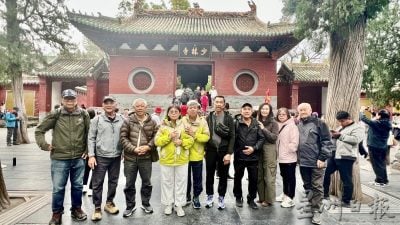
By Shin Kawashima
In addition to the Senkaku Islands issue, tensions between Japan and China are rising due to a new territorial dispute. The issue concerns one of Japan's southernmost islands called Okinotorishima Island. It is a solitary island that belongs to Tokyo Metropolis and is located at 20°N 136°E. Japan incorporated this island into its territory after the First World War.
The issue is about whether it is an island or a rock. The Chinese do not have any problems with territorial rights over the island in themselves. An observation site and a lighthouse have been built on the island and the Japanese government has declared that it is under Japanese administration, but it is uninhabited and there is no actual communal life there. Chinese survey ships have long conducted survey activities within the 200 nautical miles of EEZ around the island. The Japanese government is objecting to this. The reason for the Japanese objection is that while advance notice is required when other countries conduct surveys within the EEZ, China has neglected to do so. However, a Chinese Foreign Ministry spokesperson rejected this by saying that "We are exercising our right to survey international waters and so do not require advance permission from Japan" and that "Anyone is free to survey international waters so there is no need to obtain Japanese consent."
China's activities around Okinotorishima Island did not start just now. However, considering that the activities of Chinese government ships around the Senkaku Islands have increased extremely and created an unprecedented situation, the general view on the Japanese side is that it is connected to what is happening at Okinotorishima Island. Yet it is possible that the Chinese actions have a different side. It is the words and deeds of the United States. On July 13, Secretary of State Mike Pompeo clearly disavowed the Chinese actions by saying that Beijing's claims to offshore resources across most of the South China Sea (SCS) are completely unlawful. He also announced that the position of the United States would align with the arbitral award of the Arbitral Tribunal in 2016 that deemed the nine-dash line claimed by China as invalid. In the past, the United States has occupied a neutral position vis-à-vis territorial issues in the SCS, so this signifies a major shift. Important here is that the arbitral award of the Arbitral Tribunal judged the "islands" in the SCS to be "reefs" that have no EEZ. That also includes Taiping Island with an area of 0.5 km2. This arbitral award is about the SCS and does not discuss any other maritime areas, but if we were to invoke this arbitral award of the Arbitral Tribunal, it might be reasonable to call Okinotorishima Island a "reef." It is conceivable that the Chinese government is using the American statement against them as they are causing a new territorial dispute with the American ally Japan.
The Japanese are also trying to consolidate their basis for arguing that Okinotorishima Island is an island with EEZ. In 2008, Japan applied to the United Nations Commission on the Limits of the Continental Shelf (CLCS) for an expansion of the continental shelf of the Japanese islands in an effort to expand the EEZ of Okinotorishima Island, which was recognized in part by the United Nations in 2012. That also included the seas of South Iwo-jima Island, which are an extension of the EEZ of Okinotorishima Island. The Japanese understood this recognition to mean that Okinotorishima Island is an island with EEZ and not a reef without EEZ.
In addition, it has been pointed out that the maritime area around Okinotorishima Island is important for Chinese military strategy. Okinotorishima Island is located between what China refers to as the first island chain and the second island chain. The seas around Okinotorishima Island are also where Chinese submarines operate. In this sense, it is probably meaningful for them to conduct survey activities in the area. Territorial issues are escalating in the SCS, the East China Sea, and near the China–India border. China also has a policy of not compromising on China's core interests, so they are not likely to compromise on the territorial issues. However, territorial issues only happen when there is another party. They cannot be resolved by unilaterally claiming that you are "right." There is a need for a willingness to talk, including coordination and negotiation through multilateral conferences and international judicial organizations. "The Contracting Parties confirm that […] they shall in their mutual relations settle all disputes by peaceful means and shall refrain from the use or threat of force." This is Article I, Paragraph 2 of the Treaty of Peace and Friendship between Japan and China, concluded in 1978. I believe the time has now come to reread this article.
(Shin Kawashima is Professor at University of Tokyo, Japan.)
ADVERTISEMENT
ADVERTISEMENT


































